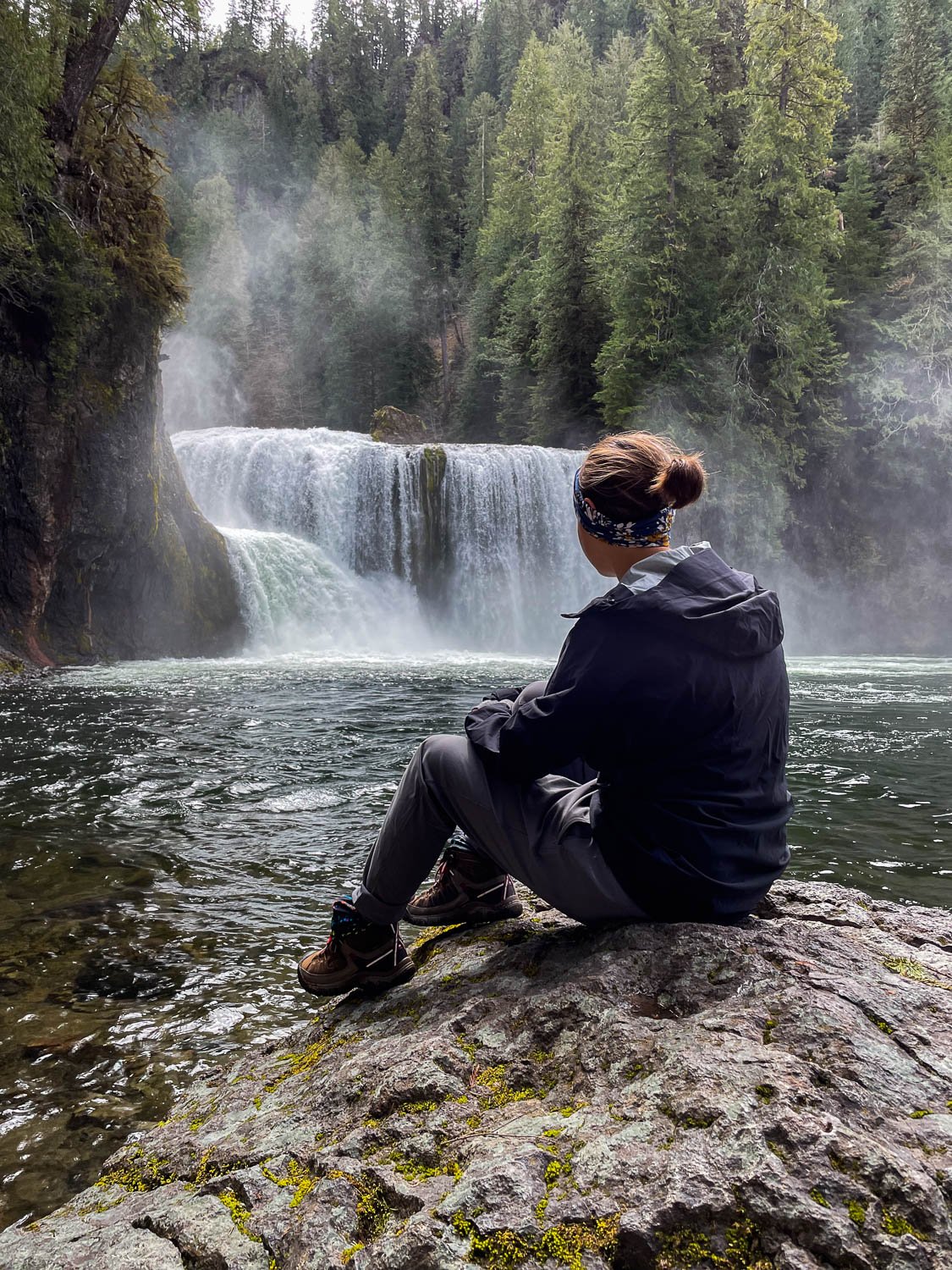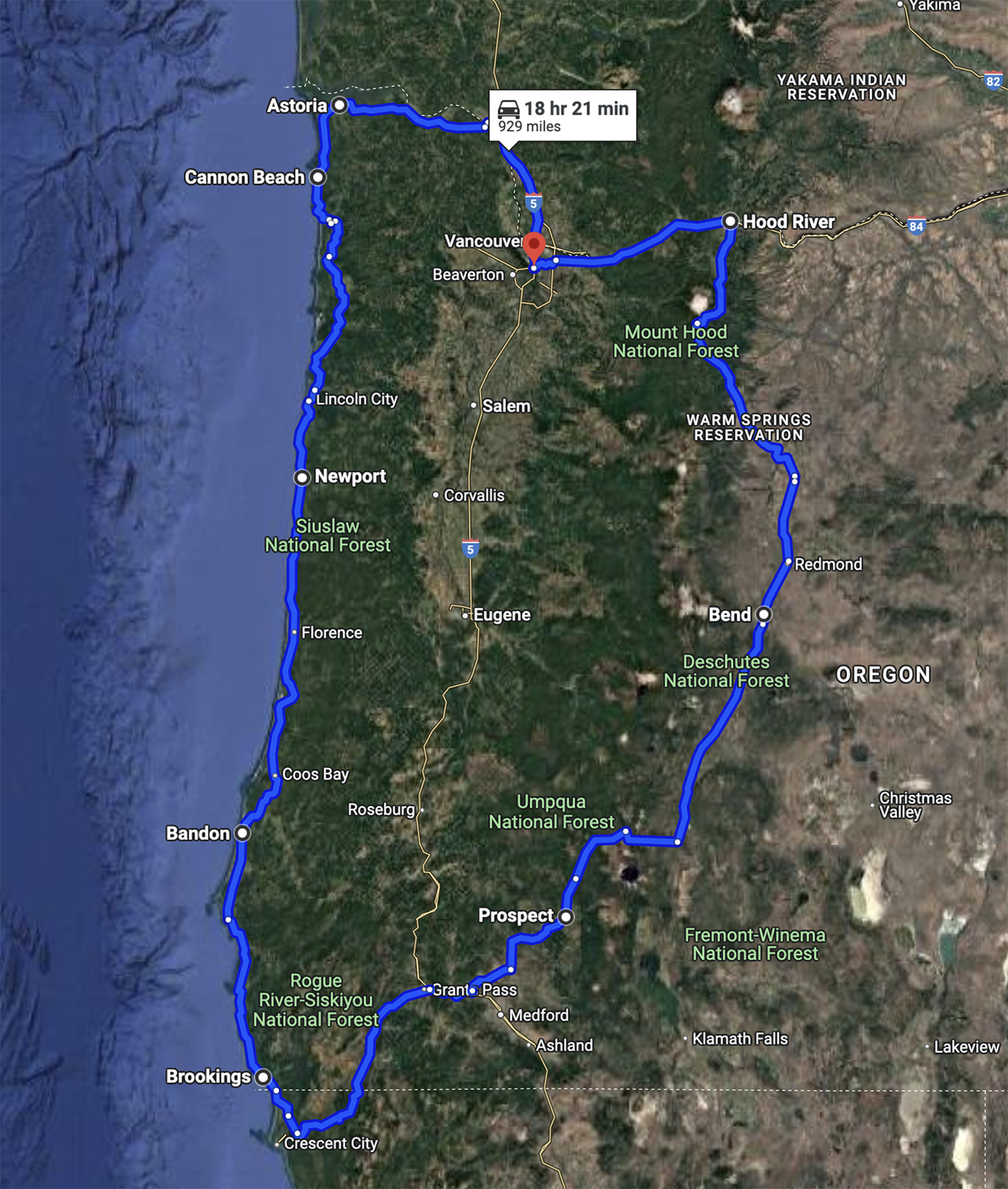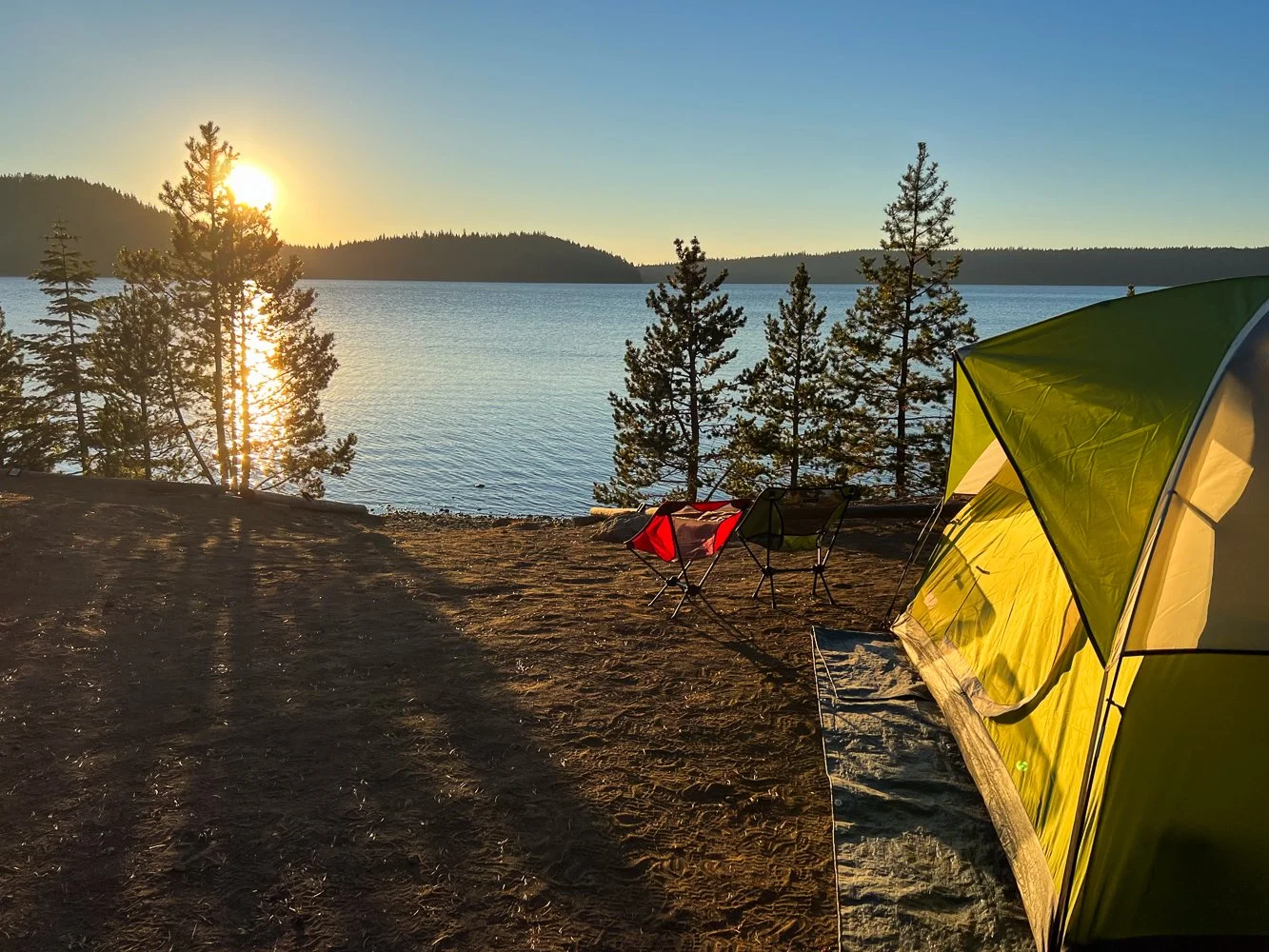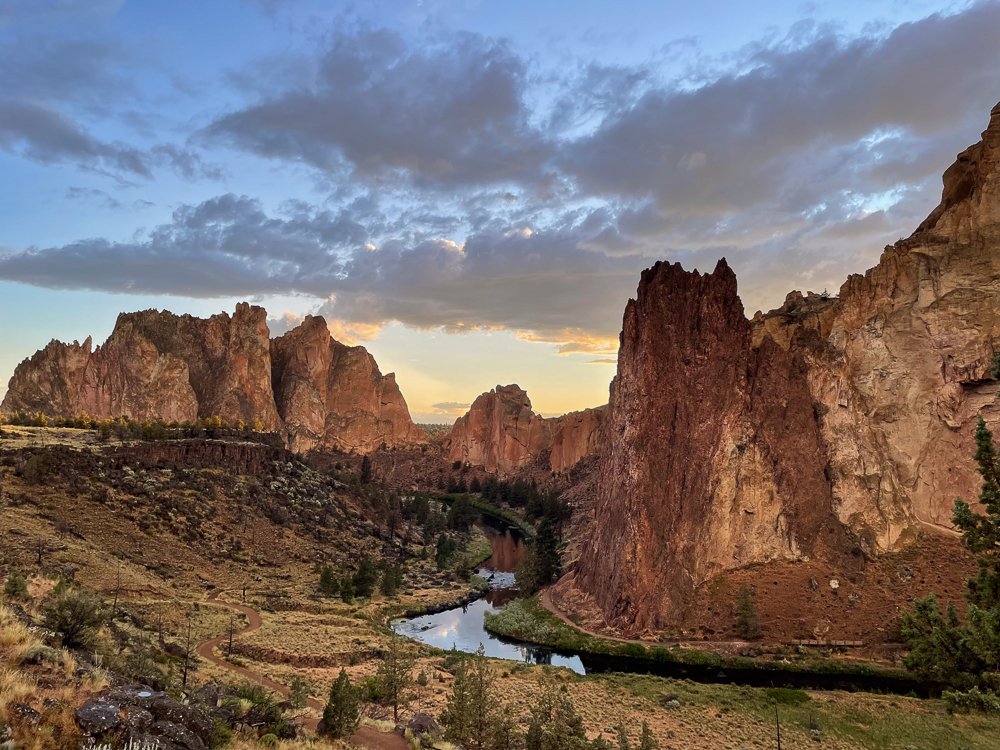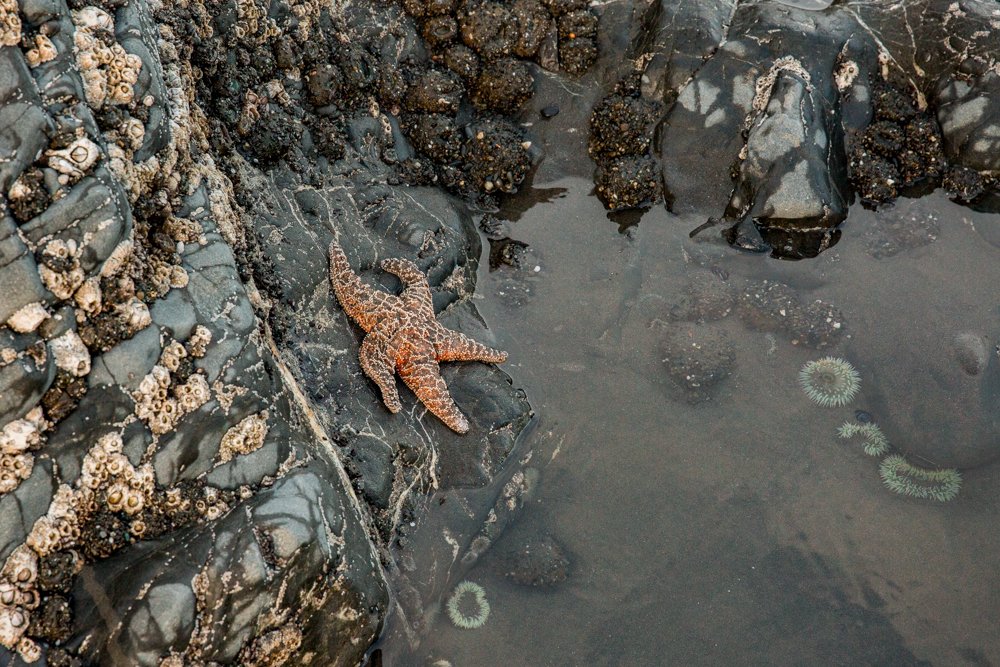Whale Watching in Oregon (How, When, and Where)
Whale watching is fun and free! We love that it’s easily accessible — you can choose between stopping to search for whales at various roadside pullouts, beaches, viewpoints, or lighthouses, and even take your chances on a hike. Knowing where, when, and what to look for is key to having a great experience.
Disclosure: We’ve included affiliate links with recommended hiking gear in this post. If you click through and buy something, we’ll receive a small portion of that sale. You won’t be charged more, and we haven’t been paid by any of these retailers to share their information. These are all our genuine preferences.
Whales
Gray whales are the most seen whale in Oregon. 20,000 of them pass by Oregon during their seasonal migration each year, and about 200 of them remain in Oregon’s coastal waters every year.
You can also see bottlenose dolphins, humpback whales, orcas, and blue whales near the Oregon coast to a lesser extent.
How to spot a whale
Look for whales by scanning near the horizon with your naked eye for spouts. Although the spouts can reach up to 12 feet, from shore, they’ll look like small puffs of smoke near the horizon. On a calm day, spouts can be visible for up to five seconds.
Once you spot a spout, zoom in with your monocular and look for more. Gray whales usually surface every 20 seconds and stay underwater for three to five minutes if they’re eating. If they’re frightened, they’ll stay under for 30 minutes traveling great distances. The longer they’ve been under, the more times they’ll blow when they surface. If they’ve been feeding, they’ll usually blow three to five times in a row, 30 to 50 seconds apart, before going down to feed again.
Source: YachatsNews
If you’re having trouble spying spouts, look for birds. They eat the same prey that whales do, so if you see many birds near the surface, there are likely other animals feeding below.
You can also use the spout to identify the species you’re viewing. Since they have different shaped blow holes, they all have unique spouts! The gray whale has two blow holes, so it’s spout is heart shaped.
Source: Seattle’sChild
When can you see whales on the Oregon coast?
Whales can be seen throughout the year along the Oregon coast, but some months are better for whale watching than others.
Late March to May
In early spring, gray whales migrate from Baja Mexico to Alaska. They can be seen one to three miles offshore. From land, you’ll be able to see small spouts on the horizon, but binoculars/monoculars are necessary for viewing. Once you find a whale, you can follow its pod traveling north along the coastline.
Mid-April to June
It’s a rare treat to see orcas off the Oregon coast, but late spring is when it’s most likely to happen. Orcas usually only stay along the coast for a couple of weeks, but there have been times when they linger longer.
When spotting orcas, rather than looking for spouts, look for their dorsal fin. They can be up to six feet in height!
June to mid-November
This is the best time to see resident gray whales from shore. They come within a half mile of the shore near the Whale Watching Center in Depoe Bay to feed.
Mid-December to mid-January
During the winter months, gray whales once again stay one to three miles offshore as they migrate back to Baja Mexico from Alaska. The peak of the migration is at the end of December, with roughly 30 whales passing by per hour!
Meghann watched for whales every morning during our December stay in a Neskowin condo.
Mornings
It’s easiest to see whale spouts in the mornings when the waters are calm. Wind tends to pick up in the afternoon, making it more difficult to see the spouts.
Clear days
Days with clear skies make for the best whale watching. Not only is it more comfortable, but it’s easier to spot white spouts on blue skies than a cloudy horizon.
Where can you see whales on the Oregon coast?
It’s possible to spot whales anywhere along the Oregon coast, but the central coast is a hot spot. If you’ll be viewing from land, seek out high vantage points for the easiest viewing.
Check out the locations on map below for great viewing sites. Click on the site you’re interested to learn more about its vantage point and if a hike is required.
Whale Watching Center
Visit the Whale Watching Center in Depoe Bay to enjoy a viewing deck, borrow binoculars, receive assistance from rangers, and view a live projection of a telescope onsite.
Tours
Between March and September, you can get a closer look at the whales — 100 feet away — with a whale-watching tour. We recommend reserving a tour with Whale’s Tail Charters. Go earlier in the day for the calmest weather.
We love that they only take two to six passengers on each boat, so it’s never crowded, and you’ll always have great views of the whales you see. Plus, you’ll have a 90% chance of seeing a whale on your trip!
What to pack
We think using a monocular is easier than binoculars
They work well for us since neither of us wear glasses, but we do have a dominant eye
They’re lighter, and smaller — great for packing on hikes and storing in the car
You’ll find most whale watchers using binoculars
Whale watching is best on bright, sunny days
This can double as a wind breaker — an absolute necessity
If you’ll be whale watching between fall and spring, bring these items as well:
Search the blog for more adventures! Try searching for topics such as “mountains”, “road trip”, or “Mount Rainier”.




